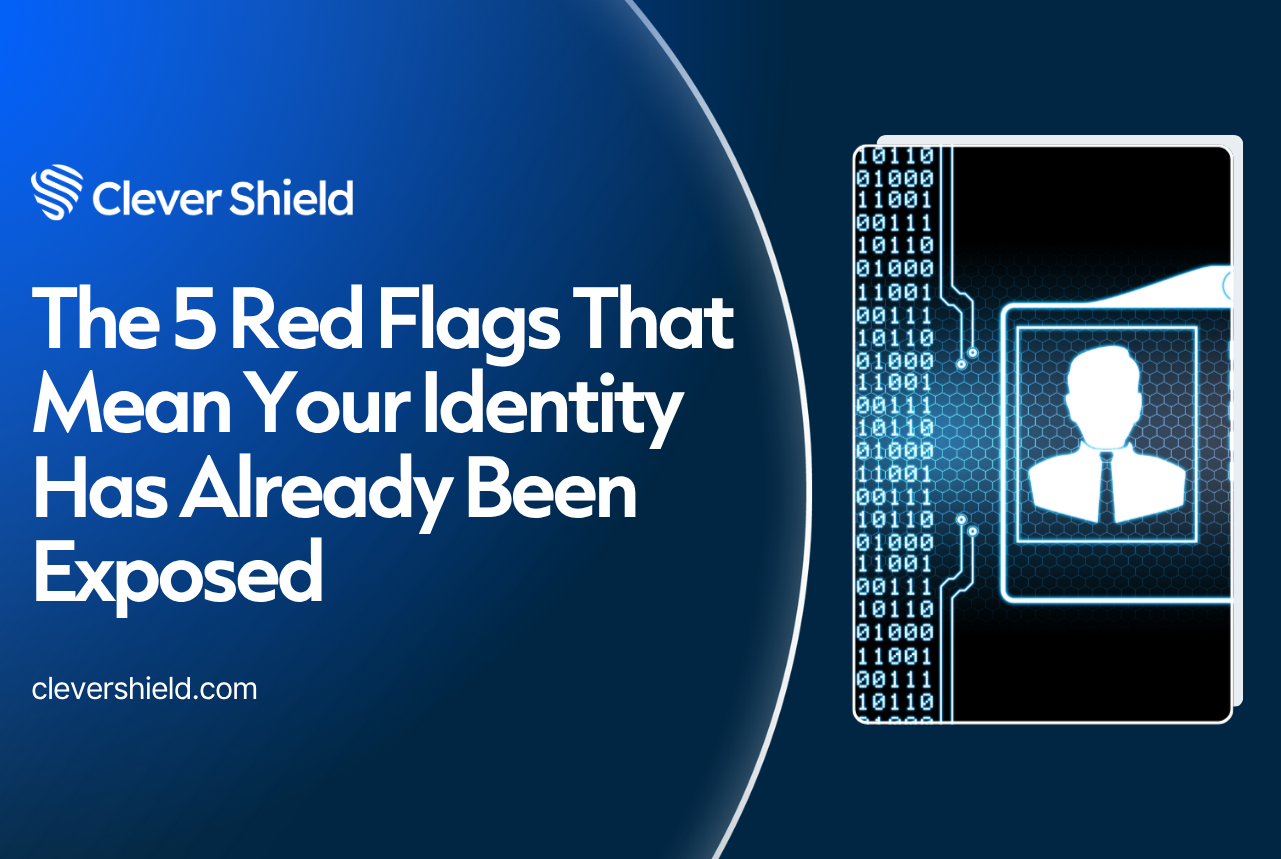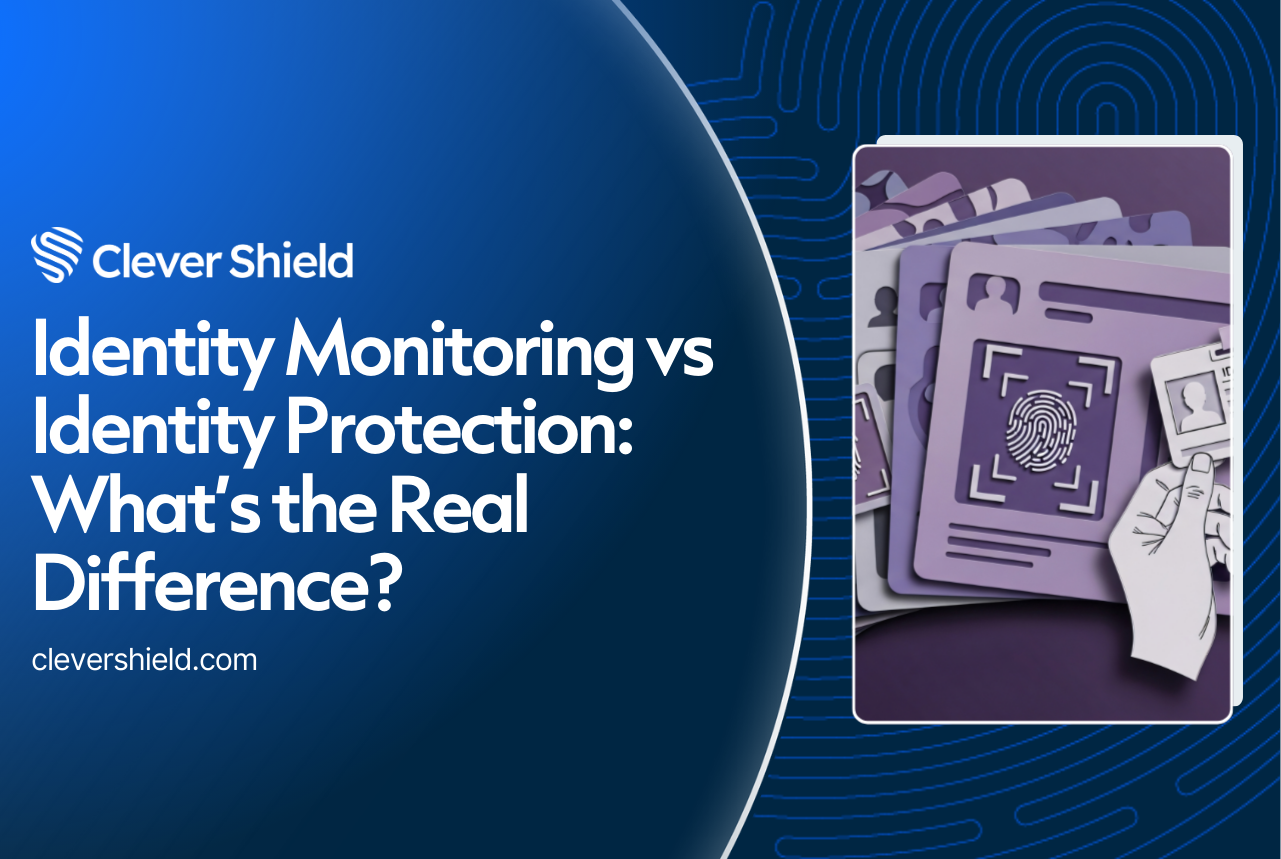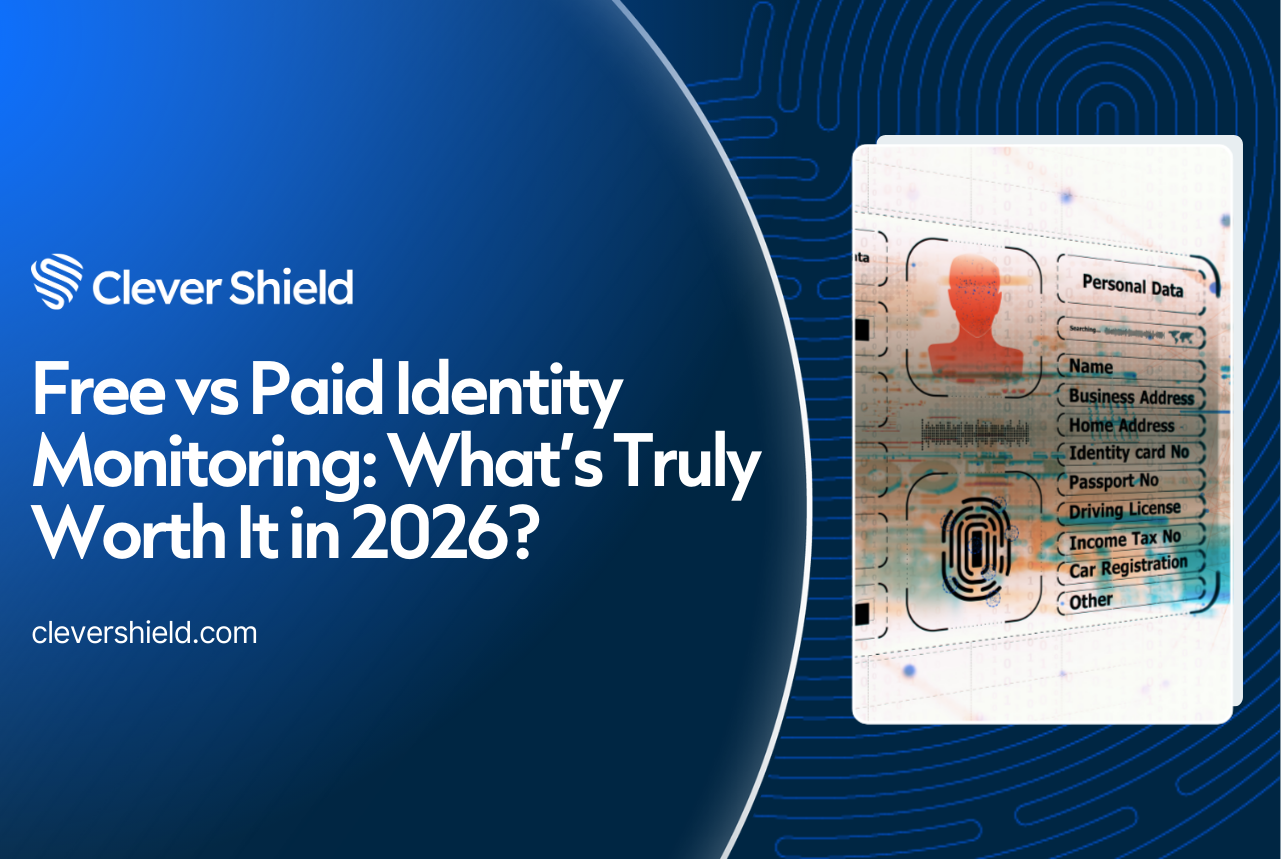Most people don’t realize their identity is exposed until the consequences start piling up — spam that never stops, robocalls at all hours, surprise collection notices, or a tax return that mysteriously gets rejected.
By the time those signals show up, your information has usually been copied, sold, and re-sold across dozens of databases.
This guide gives you a clear, no-drama checklist of the five most reliable red flags that your data is already out in the wild — plus exactly how to confirm exposure in under 60 seconds and remove it before it becomes fraud.
Throughout, we’ll show how Clever Shield fits in — not just alerting you, but actively removing your information from data brokers and monitoring for reappearance so the problem doesn’t boomerang back.
Red Flag #1: A Sudden Surge in Spam, Robocalls, or Smishing Texts
What it looks like: Your phone starts ringing from “Unknown” numbers, texts arrive with suspicious links, and your inbox fills with newsletters you never requested.
It’s not random. When your email or phone number appears on broker lists or in a leaked dataset, you get marked as “active.” That label is then resold — over and over — so the volume snowballs.
Why it matters: Spam is often the first visible symptom of exposure. Criminals and aggressive marketers buy contact lists in bulk. Each new sale spreads your data further, increasing the chance of phishing, vishing, or account takeovers.
How to validate fast: Check if your info appears in known exposures and data broker listings. The FTC’s Identity Theft portal offers official recovery steps, while the AARP Fraud Watch Network tracks current scam trends and prevention tips.
Immediate actions:
- Turn on multi-factor authentication (MFA) on email and financial accounts.
- Use built-in phone filters to silence unknown callers and report spam.
- Run a Clever Shield scan to see where your information is being sold, then trigger automated removals to cut off the source — not just the symptom.
Red Flag #2: Unfamiliar Charges, “Test” Transactions, or New-Account Mailers
What it looks like: Tiny charges you don’t remember, $1–$5 “tests,” new-card promotions, or “Welcome” letters for accounts you never opened.
Why it matters: Thieves often probe first. If a micro-charge goes through — or your data matches lender verification — bigger fraud usually follows. The Consumer Financial Protection Bureau (CFPB) explains your rights and how to dispute fraudulent activity effectively.
How to validate fast: Pull your credit files and check for hard inquiries or unfamiliar accounts. You’re entitled to free reports via AnnualCreditReport.com.
Immediate actions:
- Freeze your credit with Experian, Equifax, and TransUnion.
- Contact your bank or card issuer’s fraud department immediately.
- Activate Clever Shield monitoring and restoration so licensed specialists coordinate disputes while you focus on your day.
Red Flag #3: Collection Notices, Address Changes, or “We Updated Your Account” Emails
What it looks like: Notices from collectors for debts you don’t recognize, address-change confirmations you didn’t make, or emails saying your profile details were updated.
If expected mail stops arriving, someone may have filed a fraudulent change-of-address form to intercept your information.
Why it matters: These are strong signs of account takeover or new-account fraud already in motion. Fraudsters often change addresses or emails first to hijack verifications and statements.
How to validate fast: Review all recent account activity and set sign-in alerts. The Cybersecurity and Infrastructure Security Agency (CISA) offers practical guidance for securing accounts and preventing unauthorized access.
Immediate actions:
- Secure your email first (the key to every password reset).
- Notify lenders, utilities, and service providers about unauthorized changes.
- Use Clever Shield to send verified removal requests and maintain an audit trail that prevents bad data from reappearing.
Red Flag #4: Tax Return Rejection or Benefits Problems You Didn’t Expect
What it looks like: You file your taxes and get rejected because someone already filed using your SSN — or you receive notices for unemployment or benefits you never applied for.
Why it matters: This is tax identity theft or benefits fraud. Fixing it requires specific IRS forms, strict timing, and persistence. The IRS Identity Theft Central portal outlines official procedures and forms for recovery.
Immediate actions:
- Follow IRS instructions carefully to secure your tax accounts.
- Freeze credit immediately to block follow-on fraud.
- Engage Clever Shield’s restoration support to manage documentation and agency coordination for faster resolution.
Red Flag #5: Medical Bills or EOBs for Services You Never Received
What it looks like: Explanation-of-Benefits statements or bills for care or prescriptions that don’t belong to you.
Why it matters: Medical identity theft corrupts health records, creates false histories, and can result in denied coverage. The Identity Theft Resource Center (ITRC) provides victim guidance and recovery templates.
Immediate actions:
- Request itemized bills and correct inaccurate records.
- Notify your insurer’s fraud department immediately.
- Let Clever Shield coordinate your paper trail across providers and insurers, ensuring fraudulent data isn’t re-inserted.
How to Confirm Exposure in 60 Seconds (and What to Do Next)
Seeing one or more of these red flags means your data has likely been circulating for some time. Here’s how to confirm it quickly:
- Run a Clever Shield scan — in about 60 seconds, you’ll see which data brokers list your info and whether it appears on dark-web forums.
- Trigger automated removals. Clever Shield sends verified removal requests to brokers within 24 hours, tracks confirmations, and automatically re-removes data if it reappears.
- Turn on continuous monitoring. Get real-time alerts for new exposures, broker relistings, and suspicious activity.
- Add restoration coverage. If fraud has already occurred, Clever Shield specialists handle disputes and filings—backed by up to $1 million in identity theft insurance.
The 15-Minute Protection Checklist
- Freeze your credit (see CFPB guidance for instructions).
- Change passwords and enable MFA on key accounts (see CISA authentication tips).
- Pull free credit reports at AnnualCreditReport.com.
- Document everything — dates, case numbers, screenshots.
- Run a Clever Shield scan to start automated removals before scammers strike again.
Why Alerts Alone Aren’t Enough
“Dark-web alerts” only tell you your data leaked — but addresses, phones, and emails are the real engines of scams. They live on broker sites that keep relisting your data.
Manual opt-outs are time-consuming and temporary.
Clever Shield changes that with:
- Automated data-broker removals (within 24 hours) and continuous re-checks.
- Dark-web and surface-web monitoring.
- Real-time exposure alerts paired with action plans.
- Licensed restoration experts managing disputes with bureaus and agencies.
- $1 million insurance coverage for eligible restoration costs.
Clever Shield doesn’t just notify you — it fixes the problem.
FAQs
Is increased spam really a sign of exposure?
Yes. Spammers and brokers treat active contacts as valuable inventory. The FTC confirms that sudden increases in spam or robocalls often trace back to broker-sold data.
Should I freeze my credit or just set a fraud alert?
A credit freeze offers stronger protection. The CFPB explains both options in detail.
Do I need a police report?
Usually not — you can use the FTC Identity Theft Report as your official affidavit for most institutions.
How does Clever Shield remove my data?
We send verified opt-out requests to data brokers, track their confirmations, and automatically re-engage if your info reappears.
Can kids or seniors show these red flags too?
Absolutely. Children’s SSNs are used for synthetic identities, and seniors face aggressive phone scams. Check updates from the AARP Fraud Watch Network.
Conclusion: See the Signs — Then Close the Loop
Red flags don’t mean panic. They mean proof.
A surge in spam, mystery charges, or tax and medical issues signals your data is circulating. The fastest path to peace of mind is to confirm exposure and cut it off at the source.
While most tools stop at alerts, Clever Shield takes action: automated removals, real-time monitoring, expert restoration, and $1 million insurance.
👉 Run your free Clever Shield scan in under 60 seconds and see exactly where your data is exposed — then let us remove it before the next scam begins.






